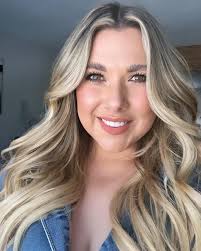The Stylist's Secret Weapon: Using Hair Science to Deliver Flawless Extensions
You know that moment? A new client sits in your chair, excited for a life-changing transformation, and you run your fingers through their hair.
Last month, a stylist named Sarah came to one of our training sessions completely defeated. She said, "I had a client come in for extensions. Her hair looked fine. But three weeks later, half the bonds slipped out and she was furious. I have no idea what went wrong."
I said, "Sarah, did you test her hair's porosity before the install?"
She looked confused. She said, "Test for what?"
That's when I realized how many stylists are working blind, relying on guesswork instead of science.
For too long, stylists have had to rely on subjective impressions and a bit of luck. But what if you could trade that uncertainty for confidence? What if you could look at a single strand of hair and understand its entire story, predicting exactly how it will behave with extensions?
That's not magic. It's science. Understanding the biology of hair is the single most powerful tool you can add to your kit. It's the difference between being a good stylist and being an irreplaceable expert who clients trust implicitly.
Let me show you how to become that expert.
The Unseen World: What a Single Hair Strand Reveals
To truly master extensions, we have to think like scientists and see what's invisible to the naked eye. Every client's hair has a unique structure, and that structure holds the key to a perfect, damage-free installation.
More than just hair: Understanding its three layers
A single hair strand is a complex structure. Understanding its layers is fundamental to knowing why certain extensions work and others fail.
The cuticle is the protective shield. Think of it as overlapping shingles on a roof. These microscopic scales protect the inner layers. When the cuticle is healthy and flat, hair is shiny and smooth.
I had a client named Jennifer who came to me after a terrible extension experience. She said, "The extensions tangled constantly and pulled out chunks of my real hair."
I looked at her natural hair under magnification and the cuticle was severely damaged, like shingles torn off a roof. I said, "Jennifer, your hair wasn't healthy enough for extensions. Whoever installed them should have seen this."
For extensions, a healthy cuticle is everything. It provides a perfect surface for tapes and bonds to adhere to. This is why 100% remy human hair extensions are the gold standard. Their cuticles are aligned, preventing the tangling and friction that damage both the extension and natural hair.
The cortex is the core of strength and elasticity. It makes up the bulk of the hair strand and contains the keratin proteins that give hair its strength. Healthy, untreated wet hair can stretch up to 50% of its length before breaking.
When you perform a hair extension installation, you are relying on the cortex's strength to support the added weight. If the cortex is compromised from chemical or heat damage, its ability to bear that weight is drastically reduced, leading to breakage.
Sarah, the stylist from the beginning, learned this the hard way. Her client's hair looked healthy on the outside, but the cortex was damaged from years of bleaching. The hair couldn't support the weight of the extensions.
The medulla is the mysterious center. The innermost layer isn't always present, especially in very fine hair. While its role isn't fully understood, its absence in fine hair is a clue that these hair types have less internal support, making lightweight extension methods crucial.
The secret timing of hair: Understanding the growth cycle
Have you ever had a client panic over shedding a few weeks after an install?
My client Rachel texted me three weeks after her extension install. She said, "There's so much hair in my brush! Are the extensions falling out?"
I called her immediately and said, "Rachel, that's just your natural shedding. Let me explain what's happening."
Hair goes through phases. The anagen phase is when hair is actively growing from the follicle. It can last for years. This is the ideal phase for extension application because the hair is securely anchored.
The catagen phase is a short transition where the hair follicle shrinks and detaches from its blood supply.
The telogen phase is when the hair is no longer growing but remains in the follicle for a few months before shedding.
The exogen phase is when the old hair falls out as a new anagen hair begins to grow in its place.
It's completely normal to shed 50 to 100 hairs a day. When extensions are in, these shed hairs are caught in the bond or weft. During a maintenance appointment, you're simply releasing the hairs that would have shed naturally.
I explained this to Rachel and she said, "Oh my God, I was freaking out for nothing. Thank you for explaining that."
Explaining this simple biological fact builds incredible client trust.
Your In-Salon Hair Lab: Simple, Scientific Assessments
You don't need a microscope to understand your client's hair structure. These two simple tests will give you a wealth of information and help you create a customized plan for every head of hair.
The porosity test: Is your client's hair thirsty or resistant?
Porosity refers to how easily hair absorbs and retains moisture, which is determined by how open or closed the cuticle layer is. It directly impacts how extension adhesives will perform.
Sarah, the stylist who had the bonds slip out, now does this test on every client. She told me last month, "I tested a client yesterday and her hair sank immediately. High porosity. I knew tape-ins would be risky, so I recommended hand-tied wefts instead. The install went perfectly."
Here's how to test: Place a clean, dry strand of hair in a glass of water.
If it floats, the cuticle is tightly packed. This is low porosity. Hair may be resistant to color, and tape-in extensions may require extra prep to ensure a secure bond.
If it floats then slowly sinks, this is medium porosity, the ideal state. The cuticle is healthy, allowing for great adhesion and product absorption.
If it sinks quickly, the cuticle is raised or damaged. This is high porosity. This hair soaks up moisture and product fast. While bonds may seem to grab on quickly, the hair is often weaker and more prone to breakage. This hair type needs gentle methods, like hand-tied weft extensions.
The strength and elasticity check: Gauging hair's resilience
This quick check tells you about the health of the hair's cortex.
My client Amanda looked amazing with her hair down, but when I did the stretch test on a wet strand, it snapped immediately with no stretch at all.
I said, "Amanda, I can't do extensions on your hair right now. Your cortex is too weak. We need to do some repair treatments first."
She was disappointed but said, "I appreciate you being honest instead of just taking my money."
Three months later, after a series of strengthening treatments, her hair passed the stretch test. We did the extensions and they held beautifully.
Here's how to test: Gently take a single wet strand of hair and stretch it.
If it stretches and bounces back to its original length, the cortex is strong and healthy. It can likely support a variety of extension methods.
If it stretches but doesn't return, or if it snaps immediately, the cortex is weak. This is a major red flag. Applying extensions to this hair without a recovery plan is asking for trouble. This is often seen in over-processed or heat-damaged hair.
Decoding Hair History: Why The Past Matters
Hair holds a record of everything it's been through. Understanding its history is critical for predicting its future with extensions.
When hair has a past: Chemical and heat damage
Chemical processes like bleaching and coloring work by lifting the cuticle to alter the cortex. While necessary for stunning color, this process permanently changes the hair's structure, often increasing porosity and reducing elasticity.
My client Jessica came to me wanting extensions. Her hair was platinum blonde, gorgeous color. But when I ran my fingers through it, I could feel how compromised it was.
I said, "Jessica, your hair is beautiful, but it's been through a lot. We need to be really careful about which extension method we use."
She said, "My last stylist just put in tape-ins without saying anything. They all fell out in two weeks."
I said, "That's because tape-ins weren't right for your damaged cuticle. Let me show you what will work."
Similarly, excessive heat can create cracks in the cuticle and degrade the keratin proteins in the cortex.
For a stylist, this means you must assess chemically treated or heat-damaged hair with extra care. You might opt for a less invasive method or recommend a shorter wear time between maintenance appointments. The goal is always to prevent further stress on an already compromised structure.
Hair through the ages: Adjusting for natural changes
Just like skin, hair structure changes with age. It often becomes finer, density may decrease, and its elasticity can lessen.
My client Margaret has been coming to me for extensions for eight years. What worked when she was 35 doesn't work now that she's 43.
Last year, she said, "The extensions feel heavier than they used to. Is something wrong?"
I said, "Margaret, your hair has gotten finer as you've aged. We need to switch to a lighter method."
We switched from k-tips to genius wefts, and the problem was solved. She said, "Why didn't anyone explain this to me before? I thought I was imagining the weight."
A scientific assessment allows you to adapt your recommendations over time, ensuring your client's hair remains healthy and beautiful at every stage of life.
Why This Knowledge Changes Everything
Sarah, the stylist from the beginning, came back to our advanced training six months after learning these techniques. She said, "My business has completely changed. I'm charging 30% more because I can explain exactly why I'm choosing each method. My clients trust me completely now. And I haven't had a single failed install since I started doing these assessments."
When you understand the why behind the methods, you stop just following steps and start creating truly custom solutions. You can confidently explain to your client why you're choosing genius wefts over k-tips for their fine hair, or why their maintenance schedule needs to be every six weeks instead of eight.
This level of expertise is what separates you from the competition. It's what allows you to justify premium pricing and builds a loyal clientele that wouldn't dream of going anywhere else.
Your knowledge becomes your brand.
Your Top Questions on Hair Science, Answered
Why do extensions sometimes slip on one client but hold perfectly on another?
This almost always comes down to porosity and scalp health. A client with low-porosity, very healthy hair might have such a tightly sealed cuticle that tapes have trouble adhering without proper prep.
My client Lisa had this exact issue. Her hair looked perfect, but tape-ins kept sliding out. I did the porosity test and her hair floated on top of the water. Low porosity.
I said, "Lisa, your cuticle is so healthy and tightly sealed that the tape can't grip. We need to use a different method."
We switched to beaded wefts and the problem was solved.
Can I really tell if hair is strong enough just by looking at it?
Absolutely not. Hair can look shiny and healthy on the surface, especially with silicone-based products, but have poor elasticity.
This is why a quick stretch test is non-negotiable. It's the only way to truly understand the integrity of the cortex, which is what bears the weight of the extensions.
How does this scientific knowledge actually help me grow my business?
Expertise is the ultimate currency in the beauty industry. When you can educate your clients about their hair on a biological level, you build immediate trust and authority.
Sarah told me, "I used to be afraid to charge what I'm worth. Now I explain the science behind what I'm doing and clients happily pay premium prices because they understand the value."
This confidence allows you to charge what you're worth, reduces the risk of costly mistakes or unhappy clients, and turns your customers into your biggest advocates.
Ready to Become the Expert?
Moving from a stylist to a true hair extension specialist begins with looking deeper. By embracing the science of hair, you unlock a new level of artistry, confidence, and success.
You're no longer just applying hair. You're engineering beautiful, lasting, and safe transformations.
Ready to become the go-to extension expert in your area? Explore our professional hair extension training and discover how a scientific approach can change your career forever.
Or book an appointment at our salon to see these techniques in action.

Tiffany Loe
Owner & Master Stylist
Hair extension expert and salon owner with a passion for helping stylists succeed. Tiffany has been transforming hair and building confidence for over 15 years.




